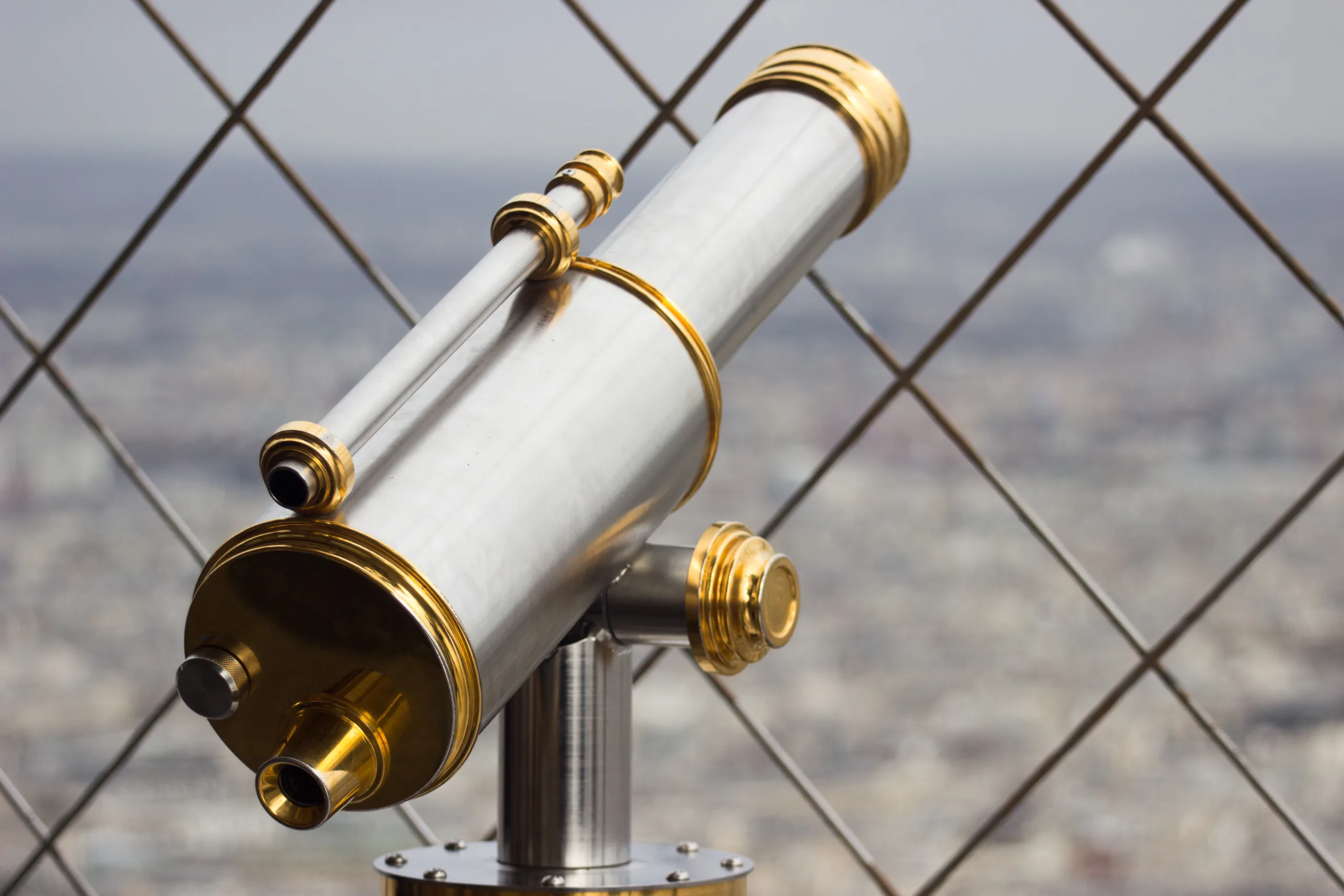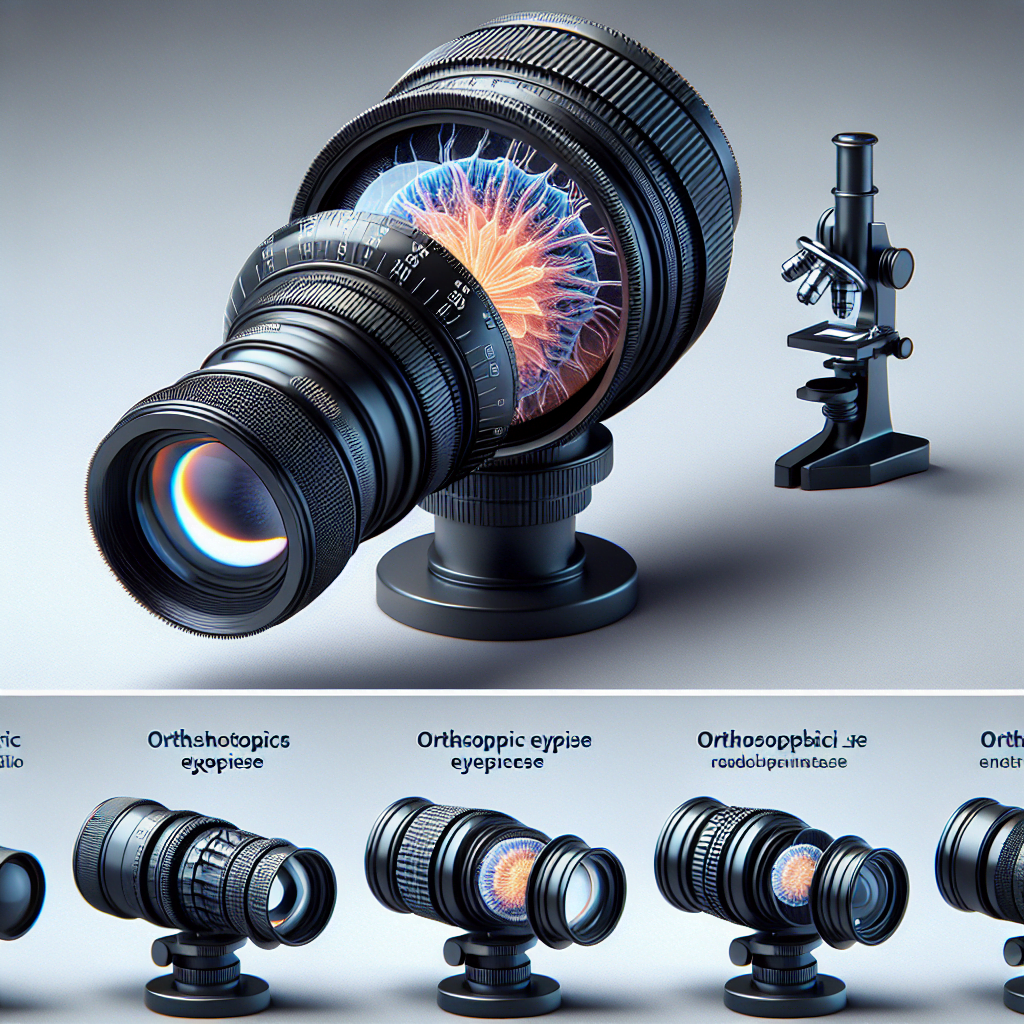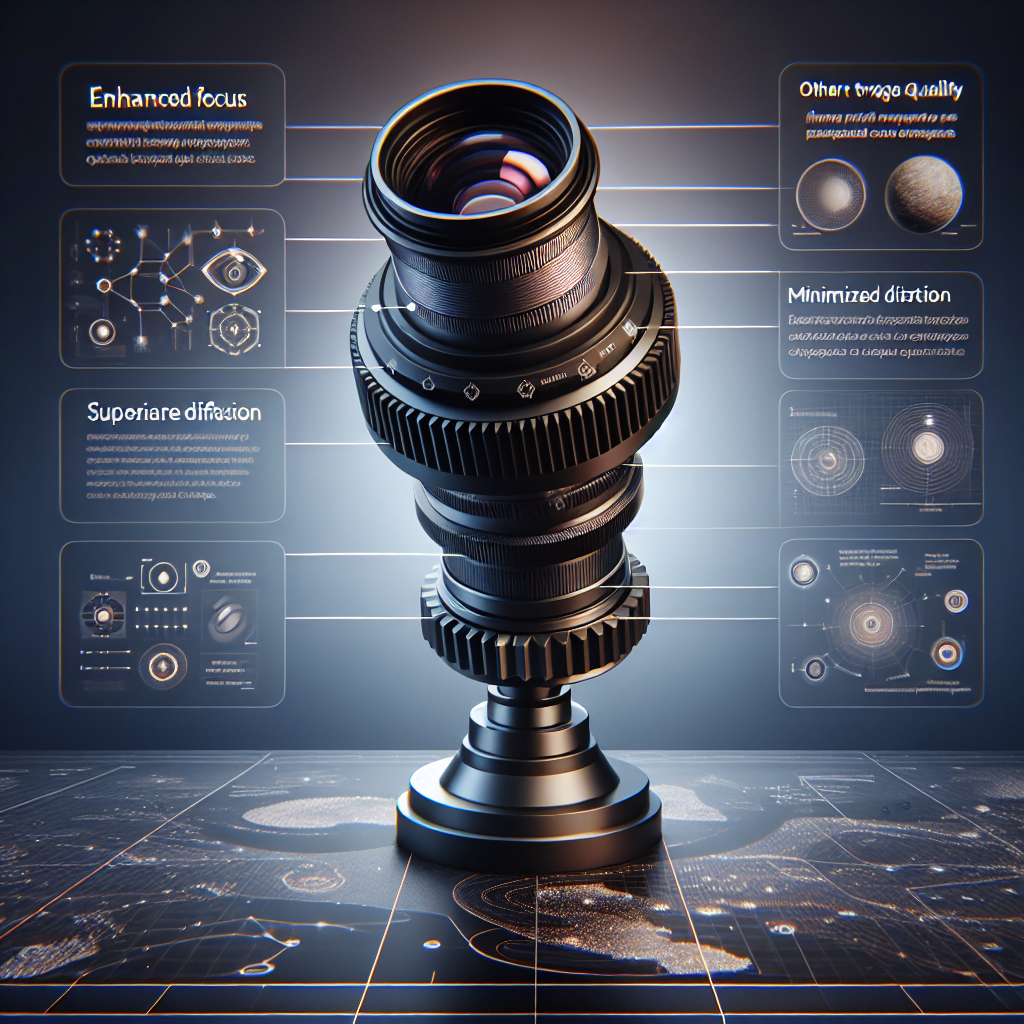Imagine you’re gazing up at the night sky, filled with twinkling stars and the wonders of the universe. But have you ever wondered how astronomers are able to observe these celestial objects in such incredible detail? That’s where an orthoscopic eyepiece comes in. This fascinating piece of equipment is specially designed to provide astronomers with a clear and magnified view of the cosmos. Whether you’re a seasoned stargazer or just embarking on your astronomical journey, understanding the benefits of an orthoscopic eyepiece will undoubtedly enhance your stargazing experience. Let’s take a closer look and unravel the magic behind this remarkable tool.

Table of Contents
Overview of Orthoscopic Eyepiece
Definition of orthoscopic eyepiece
An orthoscopic eyepiece is a type of eyepiece that is commonly used in telescopes to enhance the viewing experience. It consists of a set of lenses that are carefully designed and aligned to provide sharp and clear images. The term “orthoscopic” refers to the fact that this type of eyepiece can correct certain optical aberrations, resulting in improved image quality.
Purpose of using orthoscopic eyepiece
The primary purpose of using an orthoscopic eyepiece is to obtain better visual clarity and sharpness when observing distant objects through a telescope. By using this type of eyepiece, you can enhance the overall viewing experience by reducing optical artifacts such as chromatic aberrations and distortions.
Components of an orthoscopic eyepiece
An orthoscopic eyepiece typically consists of multiple lens elements, each with a specific function. These components work together to correct and enhance the incoming light. The main components include a field lens, an eye lens, and an optical system that provides a wider field of view.
Advantages of Orthoscopic Eyepiece
Sharper and clearer images
One of the key advantages of using an orthoscopic eyepiece is that it provides sharper and clearer images compared to other types of eyepieces. The carefully designed lenses within the eyepiece ensure that the light passing through is properly focused, resulting in reduced blurring and improved image clarity.
Enhanced contrast
Orthoscopic eyepieces are known for their ability to enhance contrast in the observed images. The precise alignment of the lens elements minimizes internal reflections, which can cause a reduction in image contrast. As a result, the details of the observed objects become more prominent and distinct.
Reduced aberrations
Another advantage of orthoscopic eyepieces is their ability to correct certain optical aberrations. Chromatic aberration, for example, is a common issue in optics that causes color fringing around objects. Orthoscopic eyepieces are designed to minimize chromatic aberration, resulting in more accurate and natural color representation.
Disadvantages of Orthoscopic Eyepiece
Narrower field of view
One of the limitations of using an orthoscopic eyepiece is that it typically provides a narrower field of view compared to other types of eyepieces. This means that you may have a smaller area of the sky visible at any given time, which can be a disadvantage when trying to observe large objects or panoramic views.
Higher magnification limits
Orthoscopic eyepieces are generally known for their higher magnification limits, which can sometimes be a disadvantage. While high magnification can be useful for observing fine details, it can also make the image dimmer and more sensitive to atmospheric conditions. This limitation may require you to use lower magnification eyepieces for certain observations.
Limited eye relief
Eye relief refers to the distance between your eye and the eyepiece lens where you can still see the full field of view. Some orthoscopic eyepieces have relatively shorter eye relief, which means you need to position your eye closer to the lens. This can be uncomfortable for individuals who wear glasses or require a longer eye relief for extended periods of observation.
Types of Orthoscopic Eyepiece
Traditional Orthoscopic Eyepiece
The traditional orthoscopic eyepiece is the original design that has been used for many years. It typically consists of four lens elements and provides good image quality with minimal aberrations. This type of eyepiece is still popular among amateur astronomers due to its affordability and reliable performance.
Plossl Orthoscopic Eyepiece
The Plossl orthoscopic eyepiece is a modified version of the traditional design. It uses a different arrangement of lens elements to improve certain aspects of the image quality. Plossl eyepieces are known for their wider field of view and better eye relief compared to traditional orthoscopic eyepieces. They are widely used for various types of observations.
Super Orthoscopic Eyepiece
Super orthoscopic eyepieces are an enhanced version of the traditional orthoscopic design. They utilize advanced lens coatings and additional lens elements to further improve image quality and reduce aberrations. Super orthoscopic eyepieces are highly regarded for their exceptional sharpness and clarity, making them a preferred choice for professional astronomers and experienced observers.

Choosing the Right Orthoscopic Eyepiece
Consideration of telescope’s focal ratio
When choosing an orthoscopic eyepiece, it is important to consider the focal ratio of your telescope. The focal ratio determines the amount of light gathered by the telescope and has an impact on the eyepiece’s performance. Typically, telescopes with slower focal ratios (higher f-numbers) work well with orthoscopic eyepieces, providing a balance between image quality and magnification limits.
Determining the desired magnification
Before selecting an orthoscopic eyepiece, it is crucial to determine the desired magnification for your observations. Higher magnification can reveal finer details, but it may also make the image dimmer and more prone to atmospheric disturbances. Consider the type of objects you will be observing and make an informed decision based on the optimal balance between magnification and image brightness.
Eye relief and comfort
If you wear glasses or prefer a more comfortable viewing experience, it is important to consider the eye relief of the orthoscopic eyepiece. Longer eye relief allows for more comfortable viewing, especially for individuals who require corrective lenses. Take into account your personal preferences and make sure the eyepiece provides sufficient eye relief for extended observations.
Budget constraints
Orthoscopic eyepieces are available at various price points, and your budget may influence your decision. While higher-end models may offer superior image quality and additional features, more affordable options can still provide satisfactory performance for casual observers. Consider your budget and prioritize your requirements to find the best orthoscopic eyepiece within your price range.
Using an Orthoscopic Eyepiece
Installation and alignment
To use an orthoscopic eyepiece, it is necessary to install it correctly in your telescope’s focuser. Ensure that the eyepiece barrel fits securely and align the eyepiece with the telescope’s optical axis. It is important to handle the eyepiece with care to avoid any damage or misalignment that could affect the image quality.
Adjusting the focus
Once the eyepiece is installed, you can adjust the focus to obtain a sharp and clear image. Turn the telescope’s focuser knob or use any other adjustment mechanism provided by your telescope to achieve optimal focus. Take your time and make fine adjustments until the observed object appears crisp and well-defined.
Proper eye positioning
When using an orthoscopic eyepiece, it is important to position your eye correctly to maximize the viewing experience. Ensure that your eye is aligned with the eyepiece lens and that you maintain a relaxed and steady position. Experiment with different eye positions to find the most comfortable and immersive viewing angle.

Care and Maintenance of Orthoscopic Eyepiece
Protective casing and storage
To ensure the longevity of your orthoscopic eyepiece, it is essential to store it properly when not in use. Most eyepieces come with protective casings or pouches that help prevent dust, scratches, and other potential damage. Always keep the eyepiece in its dedicated case or a clean and safe storage space to protect it from any accidental harm.
Cleaning techniques
Regular cleaning is necessary to maintain the optical quality of your orthoscopic eyepiece. To clean the lenses, use a soft lens brush or lint-free cleaning cloth to gently remove any dust or particles. If needed, you can also use a few drops of lens cleaning solution specifically designed for optical surfaces. Avoid using excessive force or any rough materials that could scratch the lenses.
Preventing dust and debris
Preventing the accumulation of dust and debris on your orthoscopic eyepiece is crucial for preserving its performance. Whenever you are not using the eyepiece, make sure to keep it covered with its protective cap to prevent dust from settling on the lenses. Additionally, avoid using the eyepiece in dusty or dirty environments, as this can increase the risk of contamination.
Differences between Orthoscopic and Other Eyepieces
Orthoscopic vs Kellner Eyepieces
Orthoscopic eyepieces and Kellner eyepieces are both popular choices among amateur astronomers. While both types can provide good image quality, there are some key differences to consider. Orthoscopic eyepieces generally offer sharper images with reduced aberrations, while Kellner eyepieces tend to have a wider field of view. The choice between the two depends on individual preferences and specific observation requirements.
Orthoscopic vs Wide Angle Eyepieces
Wide-angle eyepieces are designed to provide a wider field of view compared to orthoscopic eyepieces. They are especially useful for observing large celestial objects or panoramic views. However, wider field of view often comes at the cost of image sharpness and aberration correction. Orthoscopic eyepieces, on the other hand, are better suited for high-resolution observations that prioritize image quality and clarity.

Applications of Orthoscopic Eyepiece
Astronomy and stargazing
Orthoscopic eyepieces are widely used by amateur and professional astronomers for observing celestial objects. Whether you are interested in observing the Moon, planets, or deep-sky objects like galaxies and nebulae, an orthoscopic eyepiece can provide you with the clarity and sharpness needed to fully appreciate the wonders of the night sky.
Birdwatching and nature observation
In addition to astronomy, orthoscopic eyepieces can also be useful for terrestrial observations such as birdwatching and nature observation. The enhanced quality of the images provided by an orthoscopic eyepiece can help you see intricate details and vibrant colors, making your birdwatching or nature observing experience even more enjoyable.
Conclusion
In conclusion, an orthoscopic eyepiece is a valuable tool for enhancing the viewing experience through a telescope. With sharper and clearer images, enhanced contrast, and reduced aberrations, orthoscopic eyepieces offer significant advantages. However, they also have some limitations, such as a narrower field of view and limited eye relief. By considering factors like the telescope’s focal ratio, desired magnification, eye relief, and budget constraints, you can choose the right orthoscopic eyepiece for your needs. Proper installation, focus adjustment, and eye positioning are crucial for optimal use. Taking care of your orthoscopic eyepiece through proper storage, regular cleaning, and preventing dust and debris will ensure its longevity. Understanding the differences between orthoscopic and other eyepieces can help you make an informed decision. Finally, the applications of orthoscopic eyepieces extend beyond astronomy to birdwatching and nature observation. So, whether you are exploring the cosmos or observing wildlife, an orthoscopic eyepiece can enhance your viewing experience.

